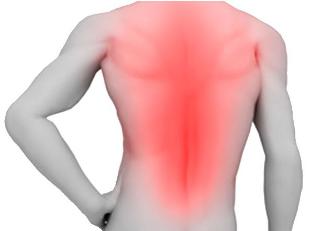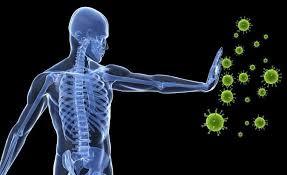If you have pain in the muscles of the back, the reasons may be different. Behind the man the occiput to the sacrum is completely covered by muscle and is a very physical activity. So why hurt your back muscles?
Pain and crunch in joints over time can lead to terrible consequences - local or complete restriction of mobility of the joint, until the injury. People, taught by bitter experience to improve the the joints are natural remedy that is recommended to a rheumatologist.
Diseases of the spine
They suffer 85% of the population. Affect the vertebrae, intervertebral discs, spinal cord, stem, roots of the spinal nerves, veins, arteries, capillaries, ligaments, muscles. The most common diseases: osteochondrosis, ankylosing spondylitis, ankylosing spondylitis, arthritis, osteoarthritis, scoliosis.
Enemies of the spine
Osteochondrosis is a chronic disease of the spine, leading to degenerative lesions and destruction of bone tissue, intervertebral discs, vertebral joint cartilage as a result of:
- hereditary predisposition;
- the wrong diet;
- overweight;
- injuries;
- lack of exercise;
- excessive loads;
- stress, etc.
Anatomical and morphological changes in the spine, the pathological mobility of the broken nerves, soft tissues, the essence of roots and vessels.
Occur tenderness.Symptoms:
- posture;
- decreased mobility of the spine joints (inability to straighten 100%, turn the head);
- reduce skin sensitivity, numbness, tingling.
To relieve the burden of altered spinal muscles reflexively tense up (compressed). Over time, the constant voltage provokes a different pain and muscle. The nature and localization of pain They affect the distribution area:
- In the case of cervical degenerative disc disease, when the compressed veins and arteries, the pain paroxysmal, burning, throbbing. Localization is often one – sided- the back of the head, the second part of the head.
- If thoracic degenerative disc disease, symptoms that often resemble other diseases (internal organs, for example), the pain is sharp in nature, similar to myocardial infarction, or gradual, incremental, similar to pneumonia, but if the cough and fever. Focuses on qui inter costas area of the shoulder blade and upper abdomen.
- When lumbar osteochondrosis, muscle pain, acute lumbar pain, back pain. Sore muscles in the lumbar and leg, with the recoil in the groin and pelvis.
Complex version, in which the inter-growth of the vertebrae, pain is reduced or disappears.
Other symptoms
With cervical osteochondrosis, in addition to the fact that the sore muscles and back and neck, symptoms of hypoxia: dizziness, nausea, migraine, loss of alertness, sensitivity in the hands and shoulder, shortness of breath, limited cervical spine mobility. In adulthood, the possible sudden loss of consciousness, extreme version – paresis and paralysis of the arms.
If thoracic degenerative disc disease — cough, "lump" in the throat, difficulty swallowing, bending, lifting hands, high blood pressure, pain in the heart area.
When lumbar degenerative disc disease — numbness of the skin, paresis and paralysis of the legs, men – problems with urination and erection, women during the menstrual cycle.
To what doctor to address, diagnostics
Because similar to other disease symptoms sick people go to a therapist, a cardiologist, a gastroenterologist. This takes time, causing complications. Concerned, the doctor is a neurologist.
2 diagnosis:
- laboratory: General and biochemical blood tests;
- instrumental: x-ray of the spine in 2 projections, MRI, CT scan and biopsy with microscopy.
The results of the study are the selected options therapeutic techniques. For the treatment of degenerative disc disease If there is muscle pain in the back, conservative and surgical treatment. A conservative contact:
- Medication. Is specified at the time of the crisis. Used anti-inflammatory drugs, muscle relaxants, hondoprotektory, vitamins b, E, angioprotectors, glucocorticoids, biogenic stimulators.
- Physiotherapy. Electrophoresis, acupuncture, magnetic therapy, physical therapy, etc. healing is faster.
- Spa-treatment. Effectively in remission.
- Diet. During the crisis, need to eat small meals 5-7 times a day, remove the roast, select your boiled and steamed food. Drink at least 1.5 liters of water a day.
If inefficacia methods performed the surgery: removal of the inter vertebralis disc herniation or intervertebral disc replacement of silicone implants (implants).
Diseases of the internal organs
Sometimes the muscle pain occurs on the background of diseases of internal organs:
- The gastrointestinal tract (gastric ulcer and duodenal ulcer, perforated gastric ulcer, intestinal pathology);
- the pancreas (chronic pancreatitis, chronic pancreatitis);
- the gall bladder (acute cholecystitis);
- liver (colic);
- respiratory (pneumonia, pleurisy, bronchitis, tuberculosis);
- the genitourinary system (prostatitis, renal colic), gynecological diseases (myomas, inflammation of uterine appendages, endometriosis);
- cardiovascular disease (myocardial infarction, angina pectoris, ischemic heart disease, aortic aneurysm).
The type of pain, focus on
When violations of the gastrointestinal tract, pancreas, gall bladder and liver acute pain localization – stomach, right side, and irradirovaniem in the lower back and collar bone, just below the shoulder blade. Hepatic colic the pain covers the right shoulder, scapula, neck, stomach. When inflammation of the prostate gland is surrounded by pain.
Diseases of the gynecological and genitourinary devices muscles are sore lower back. Severe pain in the abdomen and genitals, diffundit behind has two sides, on the background of frequent urination, indications of kidney colic.
In diseases of the respiratory system background heat diffundit pain in the back below the shoulder blades and chest, scelesto cough.
Back pain on the left side, extending to left arm and neck, evidence, diseases of the cardiovascular system.
And associated symptoms
Plagued by nausea, heartburn, vomiting, hyperhidrosis. The muscles of the abdomen is compressed, which makes the stomach hard.
Mechanical damage
Having the largest spread of the cause. You can get:
- athletes training incorrectly calculated the force of gravity or weight;
- children who have excessive mobility;
- divers when hitting the water.
- pregnant women;
- young mothers when raising the child;
- when lifting weights or increased physical loads;
- intensive movements;
- in the autumn, especially in height on your back or lower legs, when you can get compression damage to the vertebrae;
- when mechanical shocks from the outside — blunt force, blast, etc.
Main symptoms: sore back muscles along the spine and place of injury, it swells. Due to injury of vessels is bleeding into the soft tissues, contusions and bruises.
That kind of pain, localization
The injury, which caused damage to the spine lead to dull, diffuse pain at the site of injury, without a clear definition of concentration. Injuries leading to torn ligaments without displacement or fracture of the spinous processes, pain is sharp, focusing on the area of spinous and transverse processes fracture of the area of the damaged bone.
Other symptoms
Damage to the chest area, numbness in the extremities, ataxia, pain in region of heart, during inspiration.
Who to contact, diagnosis
You need to get an appointment with a traumatologist, even if the injury seems insignificant. The injury may appear later.
Is visual inspection, medical history, examination, disease, is prescribed a CT scan, chest x-ray. Results, diagnosis, treatment leads to a neurosurgeon and semper. Recommended treatment Minor damage shown, bed rest, use of anti-inflammatory and analgesic ointments and gels. Rest gradually replace small loads, not to try again.
Helminth infections, especially echinococcosis
Rarely the reason. Echinococcosis is a parasitic diseasecaused by the larval stage of the tapeworm Echinococcus. Infection occurs:
- contact with the animal carrier of worms;
- after eating contaminated animal fecal berries, vegetables, fruits;
- water from natural sources, which contain helminth eggs.
Spread blood through the body, it affects the internal organs, which form one part of the capsule, the cysts form in the bladder, the Cyst can be up to 10 liters, to achieve a couple of kilos, form not one year. Overgrown cysts leads to progressive destruction of the affected organ, up to its atrophy. Cyst rupture can cause anaphylactic shock.
Cause muscle pain in the back most often is hydatid disease of the spinal cord or kidneys.
Type of pain, location
In the early stages is asymptomatic. The growth of cysts is changing.
When hydatid cyst of the spinal cord compression of the bladder body and the vertebral arch and the spinal cord looks like a belt a sharp pain concentrated in the chest area, increase the time for powerful movements. The mobility of the spine decreases, the straight back muscles to thicken, take the form of a roll, during palpation of the spinous processes of the spine painful.
And associated symptoms During the helminthiasis of the spinal cord feels pain in the limbs. When hydatid cyst of the kidney — fatigue, loss of appetite, weight loss, malaise. Later added renal colic, exacerbation of pyelonephritis, urinary difficulties, impaired mobility of the kidney, palpable tumor circular shape in the field hypochondrium. Doctor Often people turn to allergists, internists, neurologists, infektsionistam, that does not bring relief.
The treatment is surgical intervention, the treating physician is a neurosurgeon.
Diagnostics of helminthiasis
The main methods are:
- CT. Can detect tumors in the spinal canal.
- Myelography. Use of inter-cavernous channel of the spine, the shadow of the substance allows you to take pictures (myelogram).
- A blood test . The reaction of passive hemagglutination.
Used for the treatment
So what should be done, if the sore back muscles? Treatment of the spinal canal is the removal of the compressive strength of the vertebral arch (laminectomy is), emptying the bladder, removing its outer shell, machining of the cavity is 2.5% iodium solution, then salt and sodium thiosulfate.
Cysts infected kidneys removed, if necessary, resection, or nephrectomy. After the surgical treatment, in order to avoid contamination appoint antihistamines.
Autoimmune diseases
One of the most difficult reasons. Autoimmune myositis is an inflammation of striated muscle due to the perception of the immune system cells of the muscle fibers of the threats to health of substances and destroy it in their connective tissue membranes. Can affect one muscle (myositis) or more (priapism). If the skin, it is dermatomyositis. Autoimmune myositis occurs independently and the background of the current system diseases: rheumatoid arthritis, lupus erythematosus, scleroderma.
The main symptoms are muscle weakness, tension and swelling in muscles, muscle pain, limit movement of the medical difficult to get out of bed, serve yourself.

The type and location of pain
The pain is dull, not intense. Increase in temperature, movements. In some cases, completely disappears. Focused on the area of affected muscles.
Additional symptoms
Maybe a local temperature rise. When pascebantur the neck muscles, difficulty in swallowing, the muscles of the chest and diaphragm, difficult cough, breathing.
In Dermatomyositis, the skin is swollen. Raised purple-red spots or nodules, severe itching. Who to contact, how to diagnose Autoimmune myositis can diagnose and treat rheumatologist. Inspection of the sick, to clarify the existing complaints and the presence of systemic diseases. Electromyography is appointed.
Methods of treatmentTreatment includes the use of:
- steroid-anti-inflammatory hormones;
- immunosuppressants, which suppress the immune response;
- extracorporeal methods of treatment hemosorption, plasmapheresis;
- Nsaids.
During exacerbation of the disease, intravenous vitamins and antitoxic solutions. When the relief condition usually prescribe medical massage and physiotherapy.





































